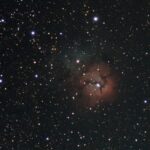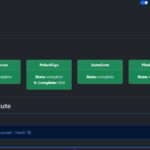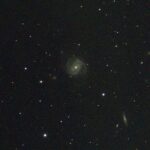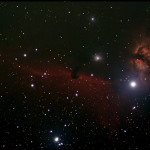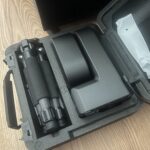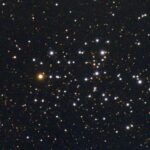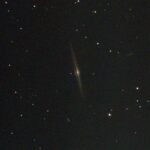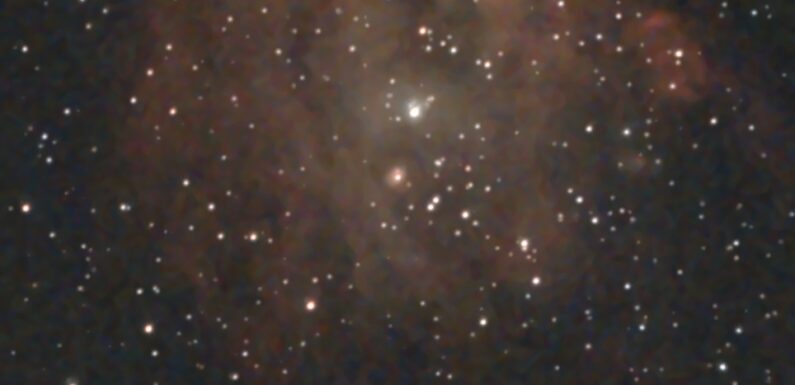
The Clear Outside forecast was not looking all that great, earlier in the day the forecast looked OK, but by early afternoon the forecast had worsened quite a bit. At around 8 PM the sky looked at least mostly clear so I put the SeeStar S50 out in the driveway. Powered it on, leveled it, and went about doing a little observing. The SeeStar S50 was great for a night like this… forecast too iffy to set up all the gear, no problem put the SeeStar out and do a little EAA.
The Moon was about 80% full and really bright. A little cooler with some high thin clouds but clear for the most part. I tried a couple of galaxies but it was not really dark enough yet. I used KStars to find something, not so close to the Moon, in a darker part of the sky. I ended up on NGC 2174, the Monkey Head Nebula, an emission nebula in the constellation of Orion. The SeeStar integrated light pollution filter was enabled and I started the enhancement (this is the live stacking in the SeeStar). This is the 30 x 20 seconds live stack just as it was seen in the SeeStar app.
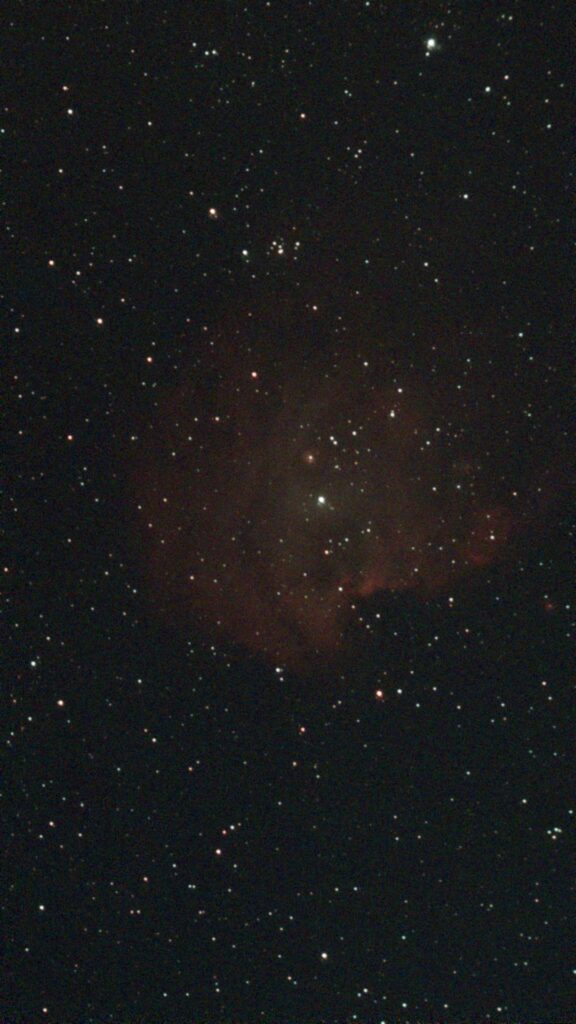
This morning I did a little tinkering in Siril. Cropped, the a little bit of stretching, noise removal, and Median filter to produce this:
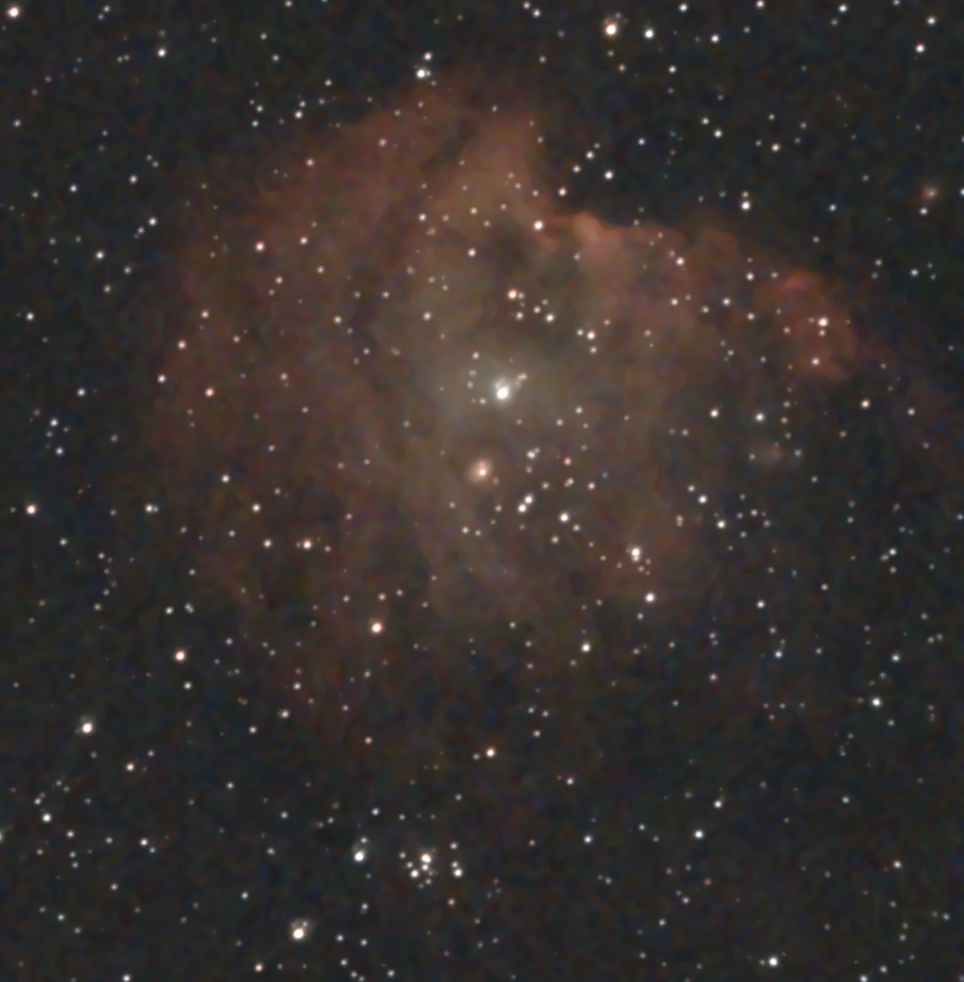
I think I might have run the Median filter a little too aggressive, but not too bad for just 15 minutes of data on this challenging nebula.
I was broadcasting on NightSkiesNetwork.com so I bounced around to a few other objects; M 35, M 100, NGC 2244. I had high hopes for NGC 2244 and the Rosette Nebula, but the Moon and the high thin clouds where not having any of that. I was using the Windows Air Screen Mirroring Receiver app to mirror the iPad screen to my workstation so I could broadcast on NSN. The free version Air Screen Mirroring Receiver worked well so I am going to register it to support the developers and to remove the unregistered nag which is displayed every few minutes.
I sent the SeeStar off to find the M104, the Sombrero Galaxy, a peculiar galaxy in the border of the constellations Virgo and Corvus. The Moon was pretty close and having a significant impact. This is less than 2 minutes, 5 x 20 seconds, of M 104 just as it was observed in the SeeStar app.
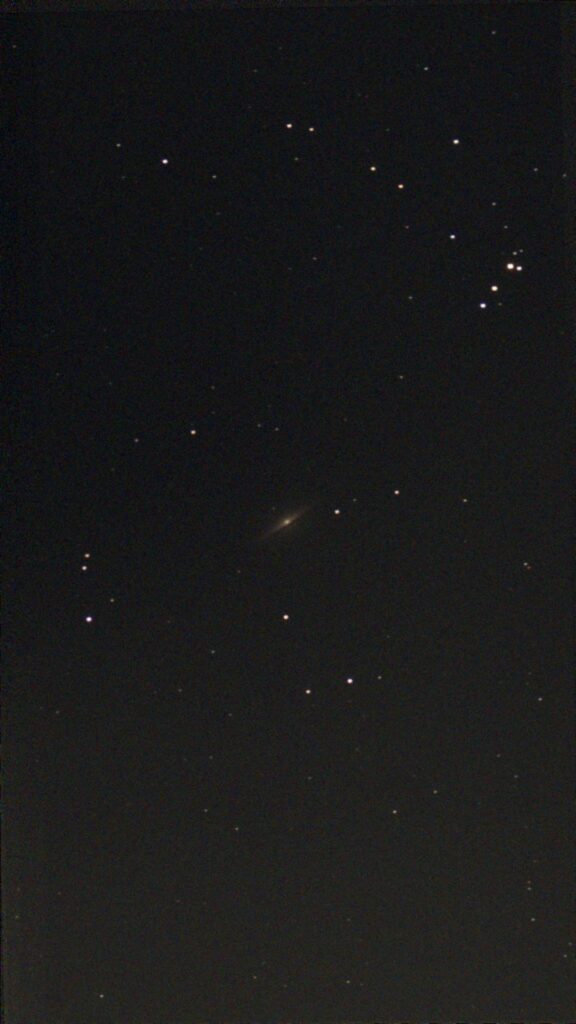
I tried tinkering with M104 in Siril a bit, but there is not enough there. Anything I did just enhanced all the noise, which I kind of expected since it is less than 2 minutes of data.
Just after 9:30 PM some clouds started to move in, and by 10 PM we were fully blanketed in clouds. So I powered off the SeeStar S50 and brought it back upstairs. Had enough time to do a bit of observing and learn a little bit more about the SeeStar app (more post to come). Another fun observing session with this neat little smart telescope.

